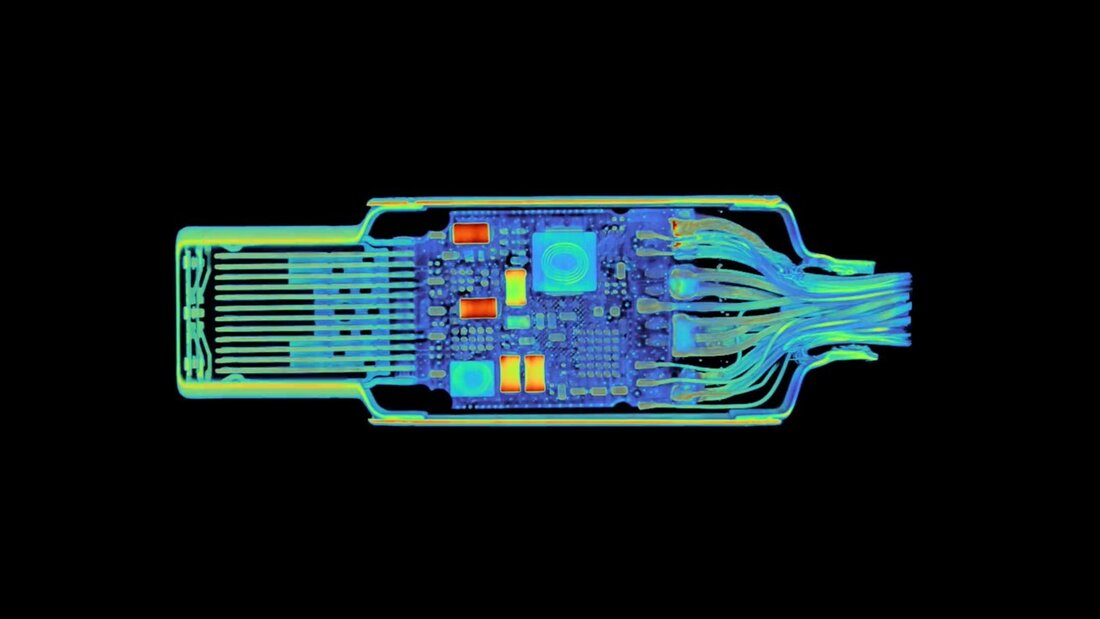 Español
Español
March 3, 2024
by Charles Miller
Last week I warned of the potential dangers of using the wrong charger to juice up the rechargeable battery in your laptop, smart phone, tablet, or other portable devices. There is still more to be said on that subject.
Dealing with these plug-in transformers, irreverently referred to as "wall warts" is actually quite straightforward. By law, all of these devices must have the output voltage and amperage printed on the device. You may need a magnifying glass to read it, but if you look you will find the specifications. By searching on the internet you should be able to learn the correct voltage and amperage of the charger for your computer, phone, or other device. Then it is a simple matter to look at the transformer you have to verify it matches those specifications before you plug it in.
Leaving behind the subject of those "wall wart" transformers, even the cable used to connect the transformer or computer to your portable device can important too. The situation here is that there is rarely any marking on a cable to tell you anything about the cable or what could be hidden inside it. It would be absolutely wrong to assume that all cords are nothing more than hunks of wire with connectors soldered on each end. Inquiring minds might ask why is it that Apple charges $129 USD for a Thunderbolt 4 Pro USB-C cable when a seemingly-identical cable can be found at Amazon.com for only $5.

Hidden inside the molded plastic plug on the end of the expensive Apple cable is a lot of complex engineering. I have never dissected one of those pricey cables to see what is inside, but I have seen X-rays. They reveal a tiny printed circuit board with what appears to be a silicon controlled rectifier, some buried resistors, or capacitors, and an integrated circuit chip. All of that in an area the size of a fingernail is hidden inside the molded plastic plugs on the end of the cable.
It does not stop there because there is an insane level of engineering that went into something as simple as the printed circuit board. The X-rays show a curious squiggle in one of the conductive traces while the conductor next to it is straight. The squiggle is a tiny detour to make sure the pair of conductors are the same length so that the electrons travel precisely the same distance going and coming, something especially important for super-high-speed data transmission.
To be fair, to compare the $129 Thunderbolt cable to a $5 USB-C cable used for charging is to compare apples to oranges. The expensive cable with all of its fancy signal processing circuits might be needed to achieve the best super-high-speed data transfers, but if all you are doing is charging the battery in your smart phone then a reasonably-priced cable should work equally well. I wrote "reasonably-priced" because some dirt-cheap cables have connectors that do not fit well and can damage the socket in your phone or tablet.
So as you can see, or cannot literally see, there can be some huge differences in the USB cables used to connect your portable devices to your computer or to a battery charger. Because the different cables look the same and the differences are effectively undetectable to a visual inspection, it is important to label all your USB cables so you will be able to know which is the expensive one and which is not.
**************

Charles Miller is a freelance computer consultant with decades of IT experience and a Texan with a lifetime love for Mexico. The opinions expressed are his own. He may be contacted at 415-101-8528 or email FAQ8 (at) SMAguru.com.
**************
*****
Please contribute to Lokkal,
SMA's online collective:
 ***
***
Discover Lokkal:
Watch the two-minute video below.
Then, just below that, scroll down SMA's Community Wall.
Mission

Visit SMA's Social Network
Contact / Contactar

